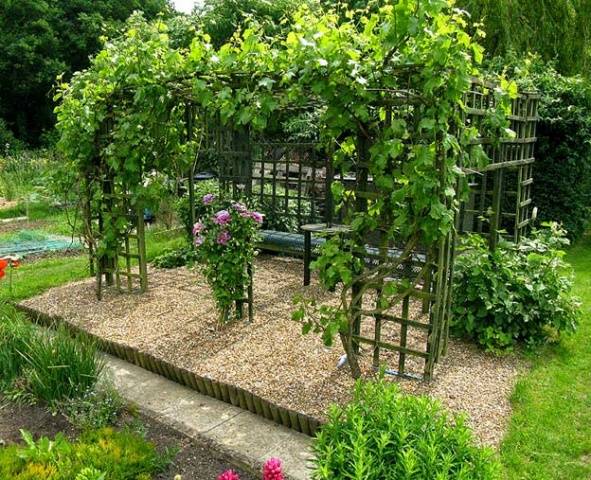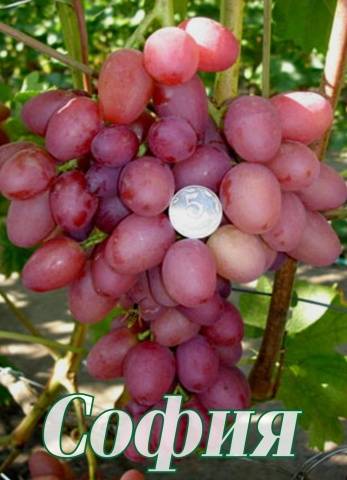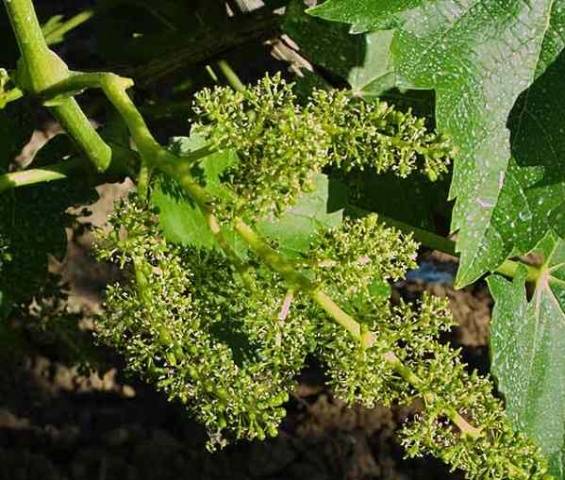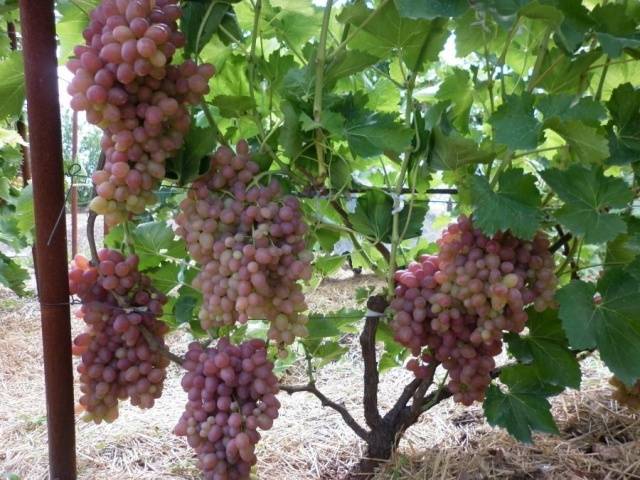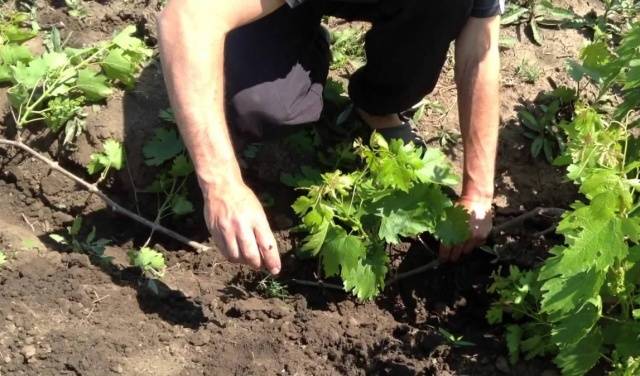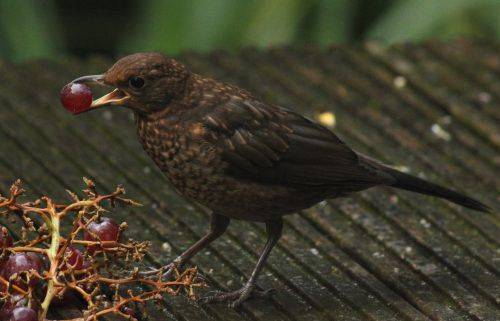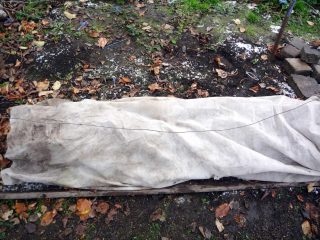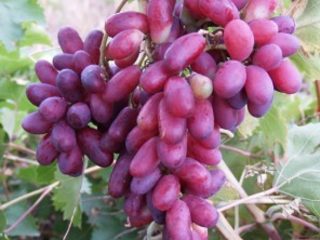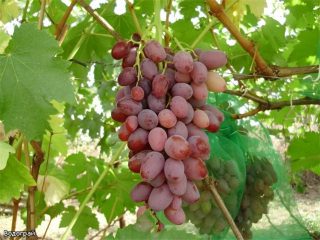Content
The Sofia grape variety at first acquaintance may seem like a plastic dummy. It's all about large berries of the same size. Indeed, the bunches look exactly like this. If you want to have delicious berries in your garden, read the description of the variety, characteristics of the grapes and photos.
Description
The Sofia grape was bred at the end of the last century by the amateur gardener V.V. Zagorulko. Varieties were used as parents Kishmish Radiant and Arcadia... The new grape has absorbed the best qualities of its ancestors. The growing season varies between 110-115 days.
Sofia is a type of early maturing table varieties. Thanks to its exquisite taste, grapes are gaining popularity among gardeners. A detailed description of the Sofia grape variety, photos, reviews and videos, we will present to our readers below.
Bush
The vine near the bush is powerful, bright brown. But the most remarkable are the leaves on the grapes. The upper leaves are dark green without pubescence. The leaf blades are large, rounded, slightly dissected, the edges are wavy. The bush is especially beautiful in autumn, when the foliage turns green-yellow.
That is why grapes are used in landscape design: they decorate the gazebos, the porch of the house, and other buildings located on the territory.
Bunches
The bunches of the variety are large, weighing more than a kilogram. Sometimes supergiants grow up to three kilograms. The shape of the grape cluster is conical. The berries are tightly pressed against each other, so the clusters are never loose.
Berries
Berries are slightly elongated ovoid, weighing up to 15 grams. They inherited external signs from the Arcadia variety. The size of the berries is 3.3x2 cm. This is clearly seen in the photo.
Berries with juicy and tender pulp, sweet taste. The aftertaste is nutmeg, bright, easy to remember. A thin but dense veined skin is another advantage.
In technical ripeness, berries with a pale pink tint, and shine in the sun. Grape raisins Sofia is a little seed variety. The berries contain no more than two seeds. They are soft, like rudiments. In some fruits, there are no seeds at all.
Flowers
The Sofia variety has only female flowers, so it requires pollinating plants. To prevent cross-pollination, which can lead to a loss of varietal qualities, there should be an Arcadia bush nearby on the site.
The flowering of the grapes is long. The pistils of flowers keep moisture for a long time, so all the flowers are pollinated: there are no peas in clusters.
Successful fruiting requires not only pollinating plants, but also proper care, in particular, pruning shrubs. Fruit-bearing shoots should be shortened by 4-8 buds.
Yield
The Sofia grape is a high-yielding variety. It's all about a vigorous shrub, on which all shoots ripen at the same time. Thanks to this, food is supplied in the required quantities. And if the grapes are grown in regions with long daylight hours and a sufficient amount of sun, then a high and stable harvest is ensured.
Distinctive characteristics
Based on the description of the Sofia grape variety, you can name the characteristic features, point out the pros and cons.
Dignity
- Ripening terms. The grapes are early maturing varieties.
- Taste features.The berries are distinguished by a delicate, sweet taste with hints of nutmeg.
- Growing conditions. Sofia is a frost-hardy grape capable of wintering at temperatures down to -21 degrees when grown in the southern regions. In harsher climates, the vine must be covered.
- Drought. Produces well in arid climates at high temperatures. If the heat is on for a long time, the bunches must be covered with grape leaves.
- The survival rate. Own-rooted seedlings quickly grasp the soil.
- Marketable condition. Bunches of grapes are visually attractive, they tolerate transportation well. That is why the Sofia variety is grown by farmers for sale.
- Application. The berries are good fresh and for processing into juice.
- Excellent immunity. Bushes are not affected by many grape diseases or the signs are poorly expressed, due to the ability of the vine to fight them. These are powdery mildew, various types of rot. But for reliability, preventive measures must be taken.
disadvantages
Despite the presence of advantages, the variety has disadvantages:
- The presence of only female flowers can lead to over-pollination by other grape varieties located at a distance of one meter from Sofia.
- The grape variety is susceptible to gray rot.
- Overripe berries can crack.
- The high density of the bunch contributes to the rotting of the berries.
- Overripe berries do not hold well on the bunch, they crumble.
The secret of large berries
As gardeners note in the reviews, the Sofia variety does not belong to unpretentious plants. He needs special care, then the berries will be large, and the clusters will not be peas. We will reveal several secrets to future winegrowers:
- During flowering, it is necessary to artificially pollinate the grapes. To do this, use a puff. Thanks to this procedure, the density of the bunch increases.
- No more than 30 brushes should be left on the bush. More bunches result in smaller berries.
- It is necessary to monitor the amount of the formed rudiments. If there are a lot of them, it is necessary to thin out. It is not necessary to pity the ovary, otherwise, due to too high density, some of the berries will begin to rot.
- If some berries in a bunch are lagging behind in development, then during filling they need to be removed so that they do not pull off nutrients.
- The plant must be sprayed from gray rot so that the appearance of the bunch and taste does not deteriorate.
- Large and tasty berries grow with regular feeding.
Reproduction
The Sofia grape is a unique plant because it can be propagated in a variety of ways:
- seeds;
- layering;
- cuttings;
- seedlings;
- by vaccination.
For grafting, a stock is used, on which the wood has matured. The effect of this method is in having an excellent root system. Fruiting begins a whole year earlier.
When propagating by layering, the most productive bush with a powerful and strong shoot is chosen. It is laid horizontally on the surface and sprinkled with fertile soil. To prevent the layer from rising, it is pinned. During rooting, it is necessary to monitor the condition of the soil: drying out is not allowed. When good roots appear on the layer, you can transplant to a permanent place.
The seed method of breeding Sofia grapes is longer, but the result is always positive.
Care features
As follows from the description and characteristics of the variety, any gardener can grow it. Care is almost identical with other grape varieties. But at the same time, you need to take into account some features:
- Sofia reacts negatively to a large number of nitrogen-containing drugs. But phosphorus-potassium dressings allow the bush to develop well, bear fruit in a timely manner and give a rich harvest.
- When growing grapes in regions where temperatures drop below -21 degrees, you need to think about the right shelter for the winter.
- During prolonged heat, the bunches can be damaged, so they are covered with grape leaves.
- The correct formation of the bush contributes to obtaining stable yields. You need to prune the vine every year. No more than eight eyes are left on the bush. Overloading reduces the weight of the bunches.
- Water the Sofia grapes abundantly before the start, during flowering and during the period of berry pouring. When the berries begin to ripen, you need to be careful with watering. A large amount of water leads to cracking of the berries.
Diseases and pests
The description indicates that the Sofia grape is resistant to many diseases and pests. But you still need to make every effort to get a rich harvest of large berries with a delicate taste.
The most dangerous pests for planting grapes are wasps and birds, lovers of eating sweet berries. Damaged fruits begin to rot, which spoils the presentation. You can escape from birds using nets that are thrown over the bushes or hide each bunch in plastic bags.
As for wasps, they cause a lot of problems. First, it is necessary to survey the territory in search of hornets' nests. Found insect settlements are burned. Secondly, it is advisable to hang velcro baits on the bushes.
It is not worth relying on disease resistance if different grape varieties grow on the site. In any case, prophylactic treatments with Bordeaux liquid, karbofos, vitriol, and other special preparations will be required.
Testimonials
